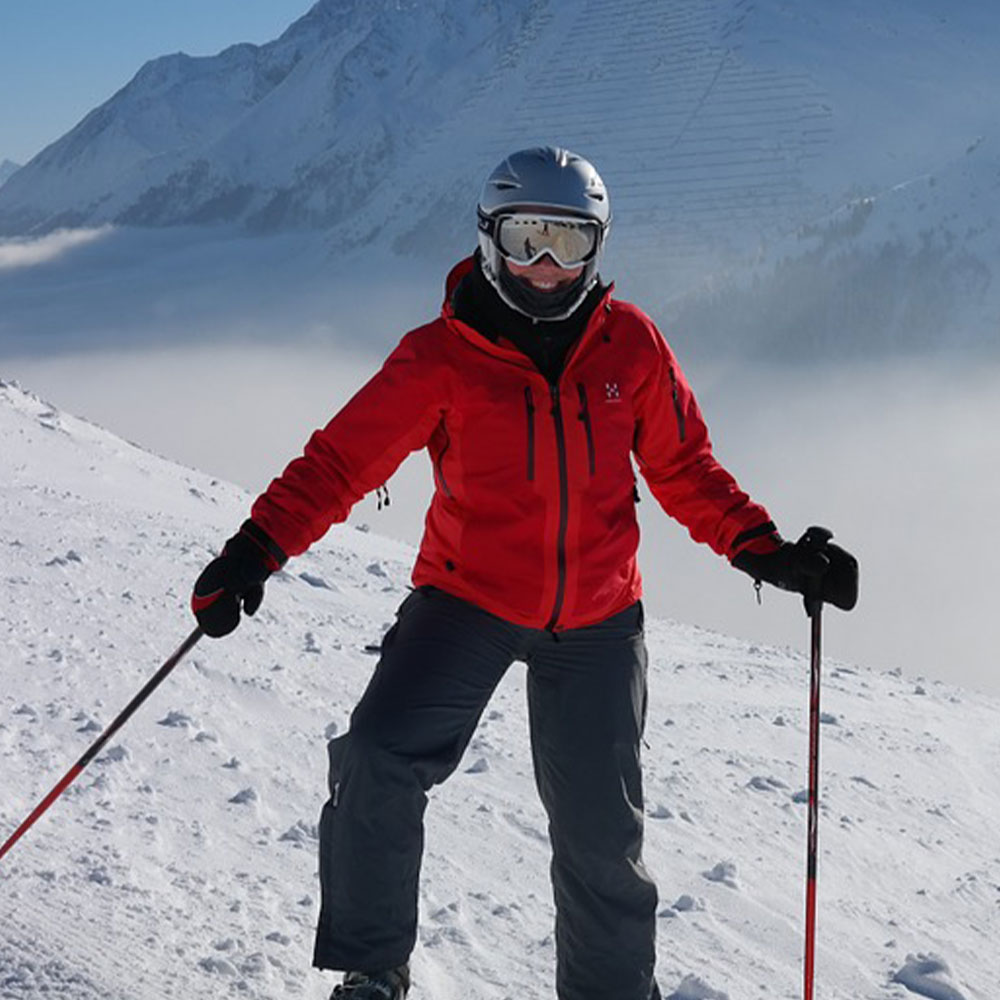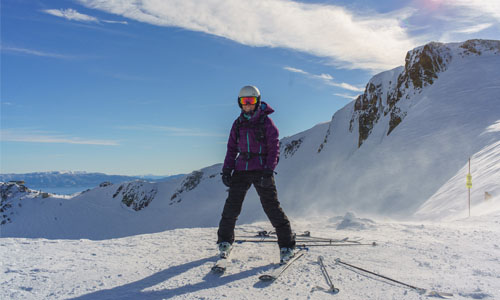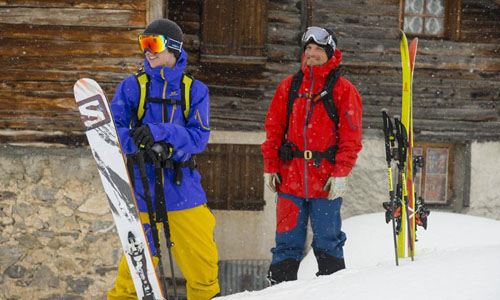Stay Warm And Cozy While You Hit The Slopes
Author

A keen runner, skier and nuts about cycling. Karl lives in Cumbria, where he loves encouraging his two children to follow in his outdoor lifestyle. Whilst out and about keeping active, Karl keeps a diary and shares it with Outdoor Look.
 If you plan to hit the slopes this winter, be prepared to face the cold. Having been associated with skiing and mountaineering for many years, I’ve learned quite a few things about staying warm while you hit the slopes. Here are a few tips that might be useful when you hit the slopes this winter.
If you plan to hit the slopes this winter, be prepared to face the cold. Having been associated with skiing and mountaineering for many years, I’ve learned quite a few things about staying warm while you hit the slopes. Here are a few tips that might be useful when you hit the slopes this winter.
Extra toe room
Earlier, I used to buy ski boots with little-to-no toe space, but after a few instances of suffering frost-nipped toes, I decided to buy immensely spacious boots for backcountry endeavors. Now, I size up a half or even a full size; the wiggle room helps to keep the blood flowing.
Food for thought
A bottle containing scorching hot tea or coffee is a precious commodity while you’re mountaineering. A few hot cups of soup are enough to make you feel warm and hearty. Nothing is more painful than having to sip near-frozen water when your fingers are already turning blue. Having a sumptuous meal is an ideal way to keep yourself going on a chilly cold day in the mountains. Prepare a lot of soup a day before you leave for the hills and it’ll keep you going throughout the day.
Staying warm is the new cool
Try keeping your boots under the heater while you’re driving on your way to the hotel. Make a point to keep them cozy and dry until they’re required. Keeping your boots warm and dry is perhaps the most important thing you’ll have to keep in mind before swirling down the slopes.
Research wind and its effect on temperature
It’s important to understand the symptoms of hypothermia. Knowing the symptoms will help you to counter them if they strike. A person suffering from hypothermia tends to squirm and fumble. It’s advisable to get that person to eat something, in order to stay warm. Also, don’t stay put at one place; keep moving around.
 Keep the warmers ready
Keep the warmers ready
Keep a few body, hand, and toe warmers if it’s really cold out there. That is perhaps the best thing you can do. Keep a few spare warmers in your bag as well. I tend to keep my smartphone wrapped in my glove in an attempt to preserve its battery. Batteries tend to die quickly in cold temperatures.
It’s always good to be multilayered
Wear a thin layer underneath and then pack it up with multiple layers. Avoid wearing a layer made of cotton underneath as it’d take a lot of time to dry and would make you feel cold and uncomfortable once you start sweating.
Keeping it warm and dry
Drying out your gear after you’ve finished skiing is really important. Remember to remove your boot liners. Unload backpacks so skins and other items have time to thaw. They can also be dried overnight. If you’re in a hut, keep everything near the stove, but be mindful to leave enough space between the gear and the blaze. Remember, excessive heat can damage your equipment.
Rise above cold temperatures and don’t hesitate to get outside. Keeping yourself warm during winter is quite a task, but a few smart steps can help you conquer winter in your quest to hit the slopes.
Author

A keen runner, skier and nuts about cycling. Karl lives in Cumbria, where he loves encouraging his two children to follow in his outdoor lifestyle. Whilst out and about keeping active, Karl keeps a diary and shares it with Outdoor Look.
Categories
- Sport (28)
- Product Reviews (3)
- Team Outdoor Look (7)
- Mike Wild (2)
- Mike Payton (2)
- Suse Hammond-Pears (3)
- Snowboarding (12)
- Latest Offers (105)
- Shop Talk (1)
- Competitions (7)
- Walking (413)
- Lifestyle Fashion (8)
- Travel (86)
- Kit Guides (176)
- Workwear Clothing (6)
- Safety Workwear (4)
- Health/Fitness (289)
- Skiing (91)
- Great Outdoors (1316)
- Cycling (92)
- January 2025
- December 2024
- November 2024
- October 2024
- September 2024
- August 2024
- July 2024
- June 2024
- May 2024
- April 2024
- March 2024
- February 2024
- January 2024
- December 2023
- November 2023
- October 2023
- September 2023
- August 2023
- July 2023
- June 2023
- May 2023
- April 2023
- March 2023
- February 2023
- January 2023
- December 2022
- November 2022
- October 2022
- September 2022
- August 2022
- July 2022
- June 2022
- May 2022
- April 2022
- March 2022
- February 2022
- January 2022
- December 2021
- November 2021
- October 2021
- September 2021
- August 2021
- July 2021
- June 2021
- May 2021
- April 2021
- March 2021
- February 2021
- January 2021
- December 2020
- November 2020
- October 2020
- September 2020
- August 2020
- July 2020
- June 2020
- May 2020
- April 2020
- March 2020
- February 2020
- January 2020
- December 2019
- November 2019
- October 2019
- September 2019
- August 2019
- July 2019
- June 2019
- May 2019
- April 2019
- March 2019
- February 2019
- January 2019
- December 2018
- November 2018
- October 2018
- September 2018
- August 2018
- July 2018
- June 2018
- May 2018
- April 2018
- March 2018
- February 2018
- January 2018
- December 2017
- November 2017
- October 2017
- September 2017
- August 2017
- July 2017
- June 2017
- May 2017
- April 2017
- March 2017
- February 2017
- January 2017
- December 2016
- November 2016
- October 2016
- September 2016
- August 2016
- July 2016
- June 2016
- May 2016
- April 2016
- March 2016
- February 2016
- January 2016
- December 2015
- November 2015
- October 2015
- September 2015
- August 2015
- July 2015
- June 2015
- May 2015
- April 2015
- March 2015
- February 2015
- January 2015
- December 2014
- November 2014
- October 2014
- September 2014
- August 2014
- July 2014
- June 2014
- May 2014
- April 2014
- March 2014
- February 2014
- January 2014
- December 2013
- November 2013
- October 2013
- September 2013
- August 2013
- July 2013
- June 2013
- May 2013
- April 2013
- March 2013
- February 2013
- January 2013
- December 2012
- November 2012
- October 2012
- September 2012
- August 2012
- July 2012
- June 2012
- May 2012
- April 2012
- March 2012
- February 2012
- January 2012
- December 2011
- November 2011
- October 2011
- September 2011
- August 2011
- May 2010
- April 2010
- March 2010
- February 2010
- January 2010
- November 2009
- October 2009
- September 2009
Submit a Comment